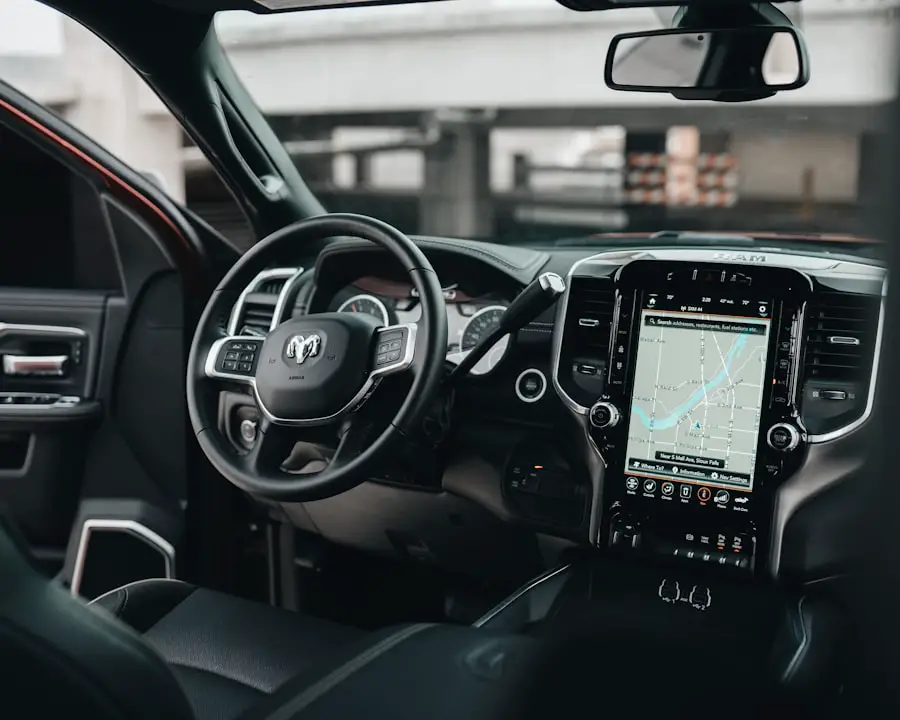In the fast-paced digital world, multitasking has become an essential skill for many users. Android devices, with their versatile operating systems, have embraced this need by incorporating a feature known as split screen. This functionality allows users to run two applications simultaneously on the same screen, enhancing productivity and providing a seamless experience for those who juggle multiple tasks.
Whether you are a student researching while taking notes, a professional managing emails and documents, or simply someone who enjoys watching videos while chatting, split screen can significantly improve your workflow. The split screen feature is not just a novelty; it represents a shift in how we interact with our devices. With the increasing size of smartphone displays, the ability to utilize the screen real estate effectively has become paramount.
This feature is particularly beneficial for larger devices like tablets, where the extra screen space can accommodate two full-sized applications side by side.
As Android continues to evolve, understanding how to leverage split screen functionality can enhance user experience and efficiency.Key Takeaways
- Split screen mode on Android allows users to view and use two apps simultaneously on their device.
- Enabling split screen mode can be done by opening the recent apps menu and tapping on the app icon at the top of the desired app window.
- Users can multitask efficiently in split screen mode by dragging and dropping content between the two app windows.
- Adjusting the size of split screen windows can be done by dragging the divider line between the two apps to the desired position.
- Switching apps in split screen mode is as simple as tapping on the app icon in the unused portion of the screen.
Enabling Split Screen on Android Devices
Enabling split screen mode on Android devices is a straightforward process, but it may vary slightly depending on the device manufacturer and the version of Android being used.
Generally, the feature can be accessed through the recent apps menu. To initiate split screen mode, users first need to open the applications they wish to use.Once the desired apps are running, they can access the recent apps view by tapping the square button or swiping up from the bottom of the screen, depending on their navigation settings. In the recent apps view, users will see a list of their currently open applications. To activate split screen mode, they can tap and hold the app they want to use in the top half of the screen.
A menu will appear with an option to “Open in split screen view.” After selecting this option, the app will occupy the top half of the display. The user can then select another app from the recent apps list or from the app drawer to fill the bottom half of the screen. This intuitive method allows for quick access to multitasking capabilities without navigating through complex menus.
Using Split Screen Mode for Multitasking

Once split screen mode is activated, users can experience a new level of multitasking that enhances their productivity. For instance, a user might choose to have a web browser open on one side while taking notes in a note-taking application on the other. This setup allows for easy reference and note-taking without the need to switch back and forth between apps.
Similarly, someone might watch a tutorial video on YouTube while simultaneously using a photo editing app to apply what they are learning in real-time. The versatility of split screen mode extends beyond just productivity tasks. Social media enthusiasts can engage in conversations on messaging apps while browsing their feeds or watching videos.
Gamers can keep an eye on their chat applications while playing games, ensuring they don’t miss important messages from friends or teammates. The ability to interact with two applications at once not only saves time but also creates a more engaging user experience, allowing for seamless transitions between tasks.
Adjusting the Size of Split Screen Windows
| Window Size | Adjustment Method | Benefits |
|---|---|---|
| Full Screen | Maximize button or shortcut | Maximizes workspace for focused tasks |
| Split Screen | Drag window edges or use window management feature | Allows for multitasking and comparison of content |
| Custom Size | Manually adjust window dimensions | Optimizes screen space for specific needs |
One of the most useful features of split screen mode is the ability to adjust the size of each window according to user preference. This flexibility allows users to allocate more space to one application over another based on their needs at any given moment. To adjust the size of the split screen windows, users can simply drag the divider line that separates the two applications up or down.
This action will resize both windows dynamically, providing a customized view that suits individual workflows. For example, if a user is primarily focused on reading an article in a web browser but still wants to keep an eye on their email notifications, they can resize the browser window to take up more space while minimizing the email app. Conversely, if they need to respond to emails more frequently, they can enlarge the email window and reduce the browser’s size accordingly.
This adaptability makes split screen mode not only functional but also tailored to individual preferences and tasks.
Switching Apps in Split Screen Mode
Switching between applications while in split screen mode is designed to be user-friendly and efficient. If a user wants to change one of the applications currently displayed in split screen, they can do so without exiting the mode entirely. By tapping on the app icon at the top of one of the windows, a menu will appear showing recently used applications as well as options to access other apps from their device.
This feature allows for quick transitions between different tasks without disrupting workflow. For instance, if a user is working on a document in one window and needs to reference another application—such as a calendar or task manager—they can easily switch out the document app for their calendar app without having to close split screen mode. This capability is particularly beneficial for those who frequently need to consult multiple sources of information or manage various tasks simultaneously.
The ease of switching apps enhances productivity by minimizing interruptions and maintaining focus.
Exiting Split Screen Mode

Exiting split screen mode is just as simple as entering it, allowing users to return to full-screen applications with minimal hassle. To exit this mode, users can drag the divider line all the way to the top or bottom of the screen, effectively closing one of the applications and returning to single-app view. Alternatively, tapping on the square navigation button or swiping up from the bottom (depending on navigation settings) will also allow users to exit split screen mode quickly.
This straightforward exit process ensures that users can transition back to their regular app usage without confusion or delay. For those who may find themselves frequently switching between tasks, this ease of exiting and entering split screen mode contributes significantly to an efficient workflow. It allows users to focus on one task at a time when needed while still having quick access to multitasking capabilities when required.
Troubleshooting Common Issues with Split Screen
While split screen mode is generally reliable, users may occasionally encounter issues that hinder its functionality. One common problem is when an app does not support split screen mode at all. Not all applications are designed with this feature in mind; some may not function correctly when displayed alongside another app.
In such cases, users may receive an error message indicating that the app cannot be opened in split screen view. To resolve this issue, users should check for updates for both their operating system and individual applications, as developers often release updates that enhance compatibility with new features. Another issue that may arise is performance lag when running two resource-intensive applications simultaneously in split screen mode.
Devices with lower RAM or older processors may struggle with multitasking under these conditions. Users experiencing lag should consider closing background applications that are not in use or restarting their device to free up system resources. Additionally, ensuring that there is sufficient storage space available can help improve overall device performance when utilizing features like split screen.
Conclusion and Final Tips for Using Split Screen on Android
To maximize productivity while using split screen mode on Android devices, users should familiarize themselves with various tips and tricks that enhance their experience. For instance, organizing frequently used apps into folders on their home screen can streamline access when entering split screen mode. This organization allows for quicker selection of applications without having to sift through numerous icons.
Moreover, users should explore different combinations of apps that work well together in split screen mode. For example, pairing a note-taking app with a web browser or using a messaging app alongside a video streaming service can create efficient workflows tailored to specific tasks or activities. By experimenting with different setups and adjusting window sizes as needed, users can find configurations that best suit their individual needs and preferences.
Ultimately, mastering split screen functionality on Android devices opens up new avenues for productivity and efficiency in daily tasks. By understanding how to enable and utilize this feature effectively, users can transform their devices into powerful multitasking tools that cater to their unique lifestyles and work habits.
If you’re looking to learn how to do split screen on Android, you may also be interested in checking out this article on terms and conditions related to mobile apps and software. Understanding the legal aspects of using technology can be just as important as knowing how to use it effectively. For more information on apps and software, visit appssoftwares.com or reach out to them directly through their contact page.
FAQs
What is split screen on Android?
Split screen on Android allows you to view and use two apps simultaneously on your device’s screen. This feature is particularly useful for multitasking and increasing productivity.
How do I enable split screen on my Android device?
To enable split screen on your Android device, open the first app you want to use, then tap the “Recent apps” button (usually a square or three lines) to view your recent apps. Find the second app you want to use, then tap and hold the app’s icon and select “Open in split screen view.”
Can all Android devices use split screen?
Not all Android devices support split screen functionality. This feature is typically available on devices running Android 7.0 Nougat or later. Additionally, some manufacturers may have their own implementation of split screen, so the method to enable it may vary.
Are there any limitations to using split screen on Android?
While using split screen, some apps may not be compatible and may not work properly in this mode. Additionally, using split screen may consume more battery and processing power, so it’s important to consider the impact on your device’s performance.
Can I adjust the size of the split screen windows?
Yes, you can adjust the size of the split screen windows by dragging the divider line between the two apps to resize them according to your preference. Keep in mind that some apps may have a minimum size requirement for split screen functionality.
